Mutant Flowers: Images of Sunflower Varieties
Vincent van Gogh's Sunflowers
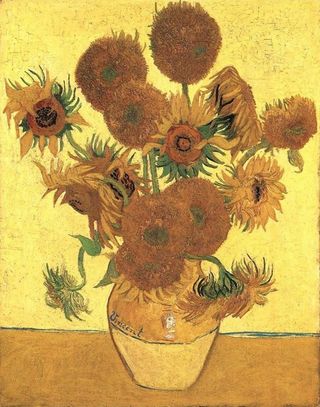
"Sunflowers (Still Life: Vase with Fifteen Sunflowers)'' by Vincent van Gogh (1888) with double-flowered sunflower heads, the result of a genetic mutation.
Sunflower seed and petal whorl
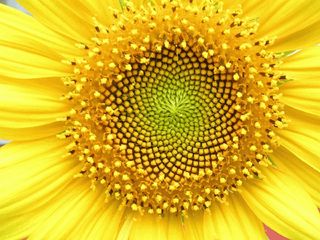
Sunflower florets are laid out in a very specific geometry.
Teddy Bear sunflower

An orange sunflower mutant, a variety called the "Teddy Bear," has all rows of florets turned into petals.
Seeding sunflower
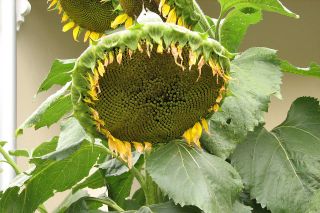
This variety of sunflower has more florets that make seeds and fewer that make petals.
Sunflowers and petals

The most common wild sunflower variety is shown in box A, and its florets are shown in B. Box C shows a double-flowered mutant variety, with its florets shown in D. Box E shows the tubular variety, with its florets shown in F. The arrows in box G indicate the double-flowered mutants depicted in van Gogh's Still Life: Vase with Fifteen Sunflowers.
Field of sunflowers
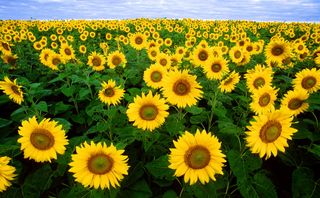
A field of normal, non-mutated, sunflowers.
Red sunflower mutant

Other varities of sunflower have darker hues.
Sign up for the Live Science daily newsletter now
Get the world’s most fascinating discoveries delivered straight to your inbox.
Kid and sunflower

When not being attacked by small children, immature sunflowers are able to orient themselves toward sunlight.
How to Make Busy Bees Busier
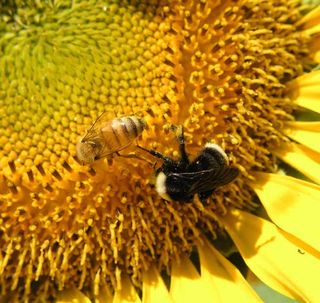
A wild bee (the bumble bee Bombus vosnesenskii) and a honey bee forage together on a sunflower. Honey bees that interact with wild, native bees are up to five times more efficient in pollinating sunflowers.
Jennifer Welsh is a Connecticut-based science writer and editor and a regular contributor to Live Science. She also has several years of bench work in cancer research and anti-viral drug discovery under her belt. She has previously written for Science News, VerywellHealth, The Scientist, Discover Magazine, WIRED Science, and Business Insider.

